
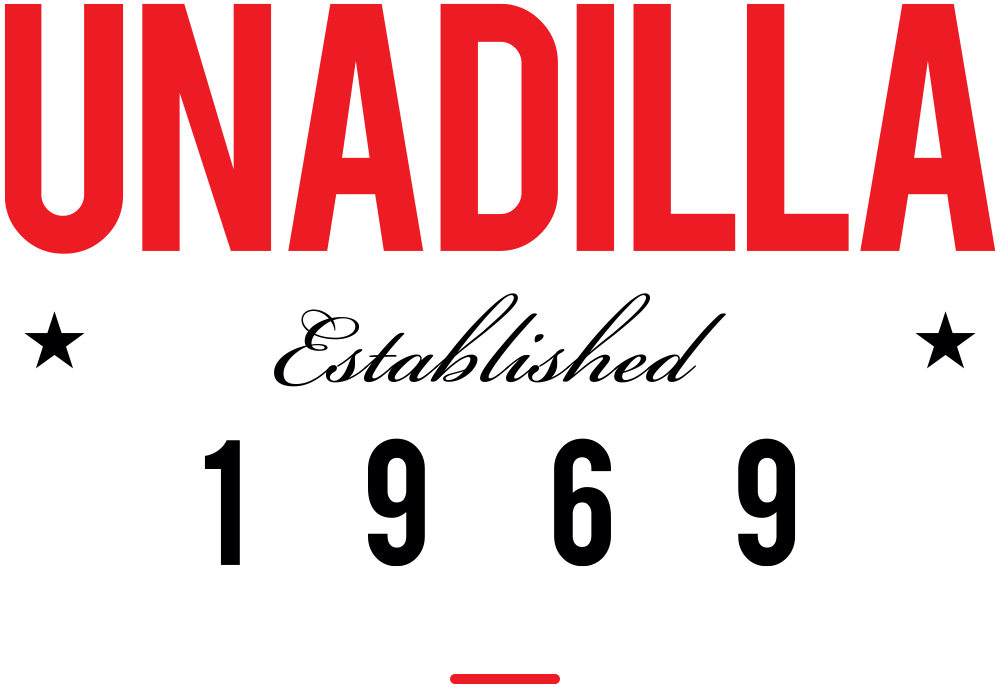








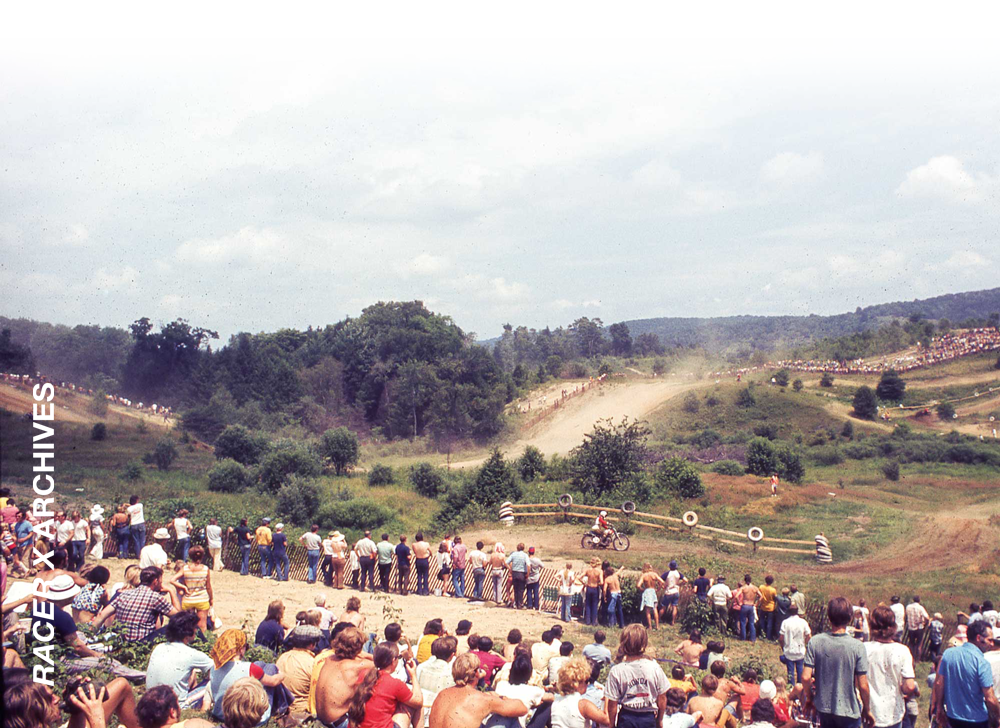
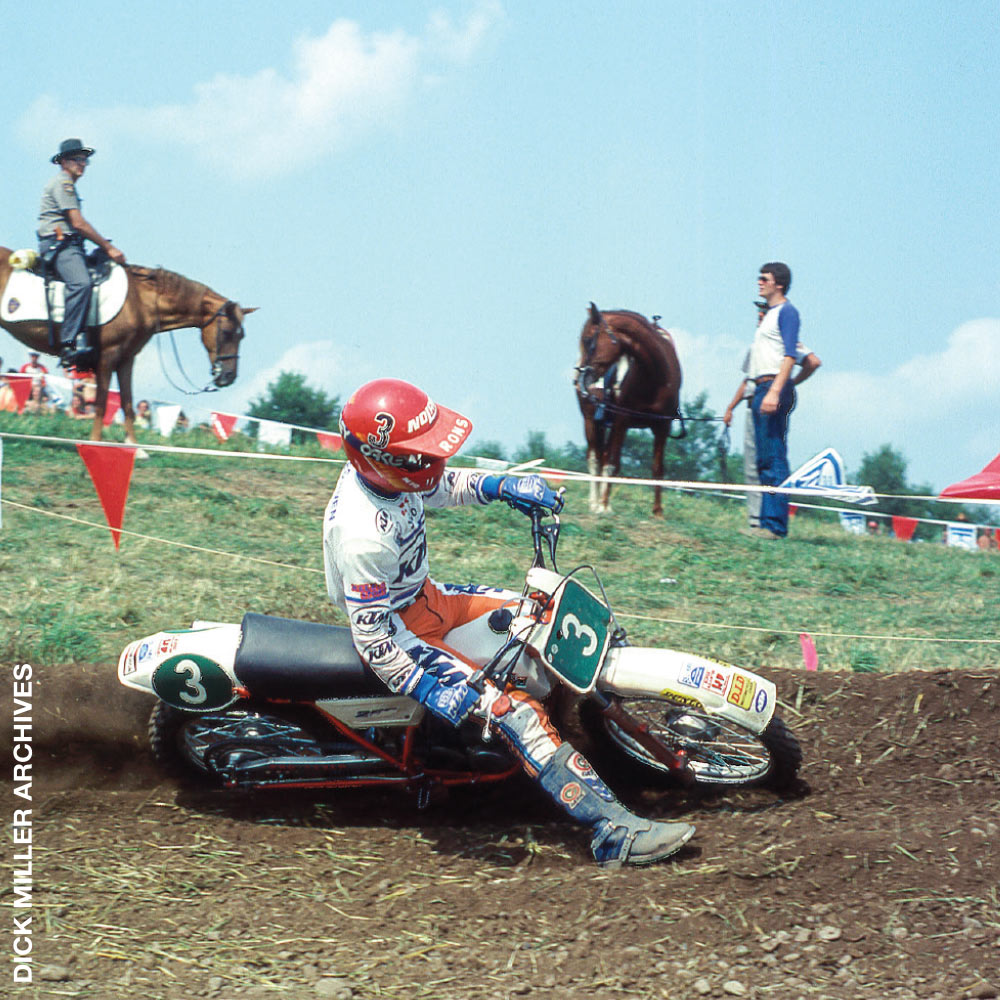
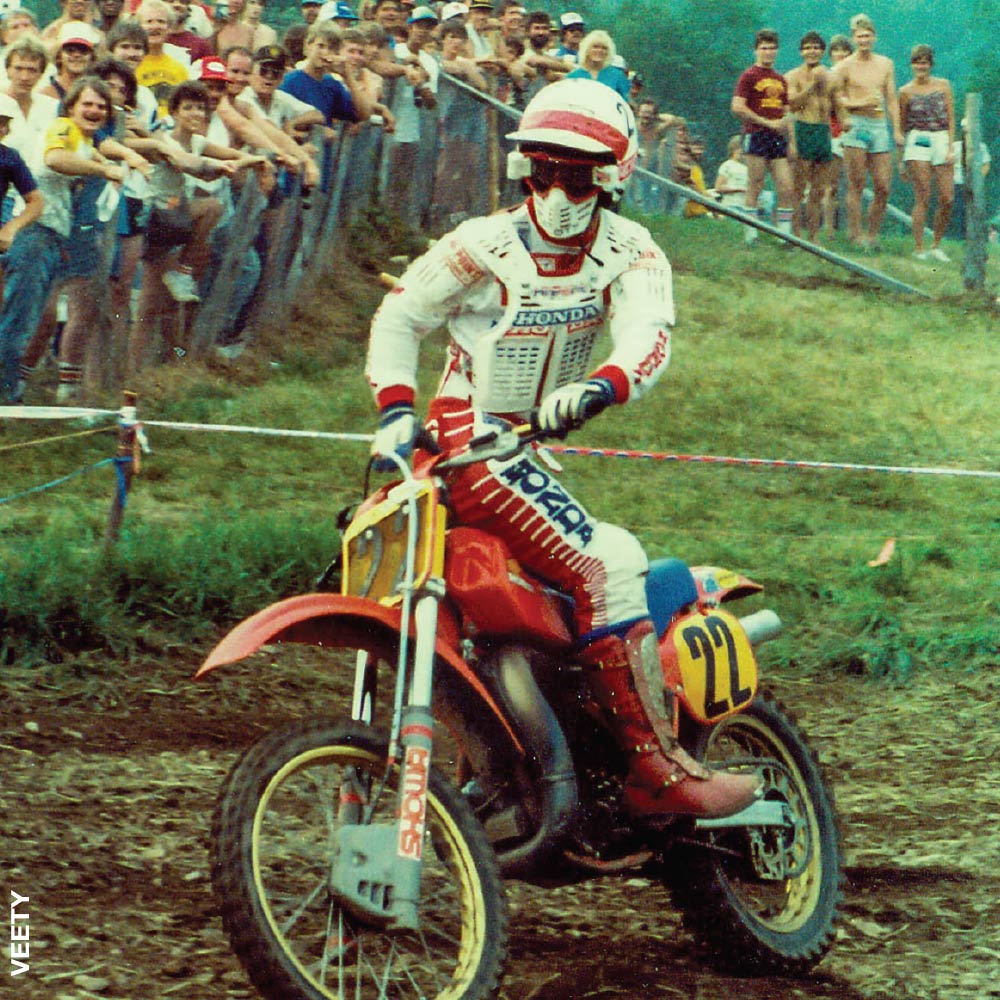
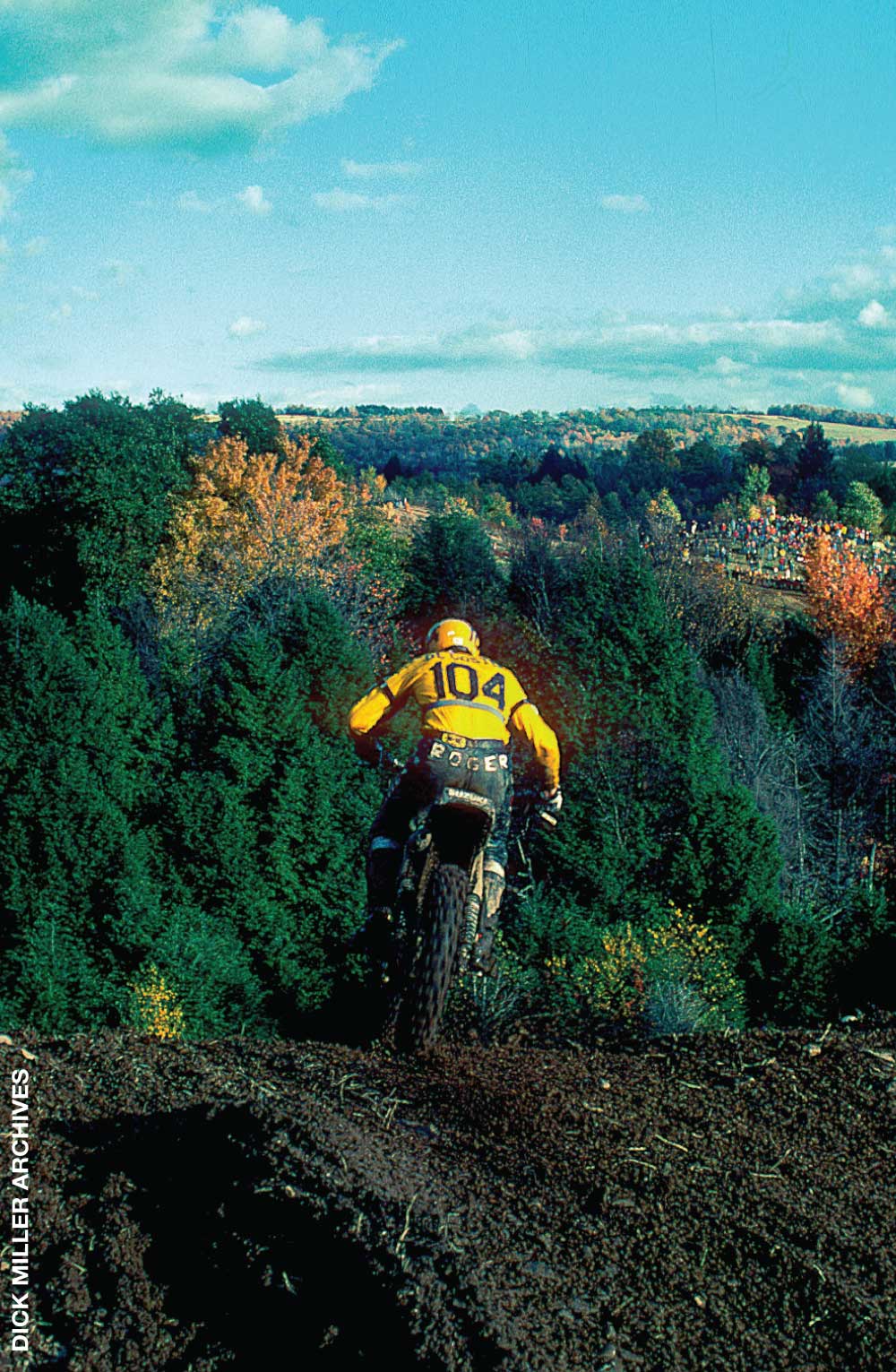
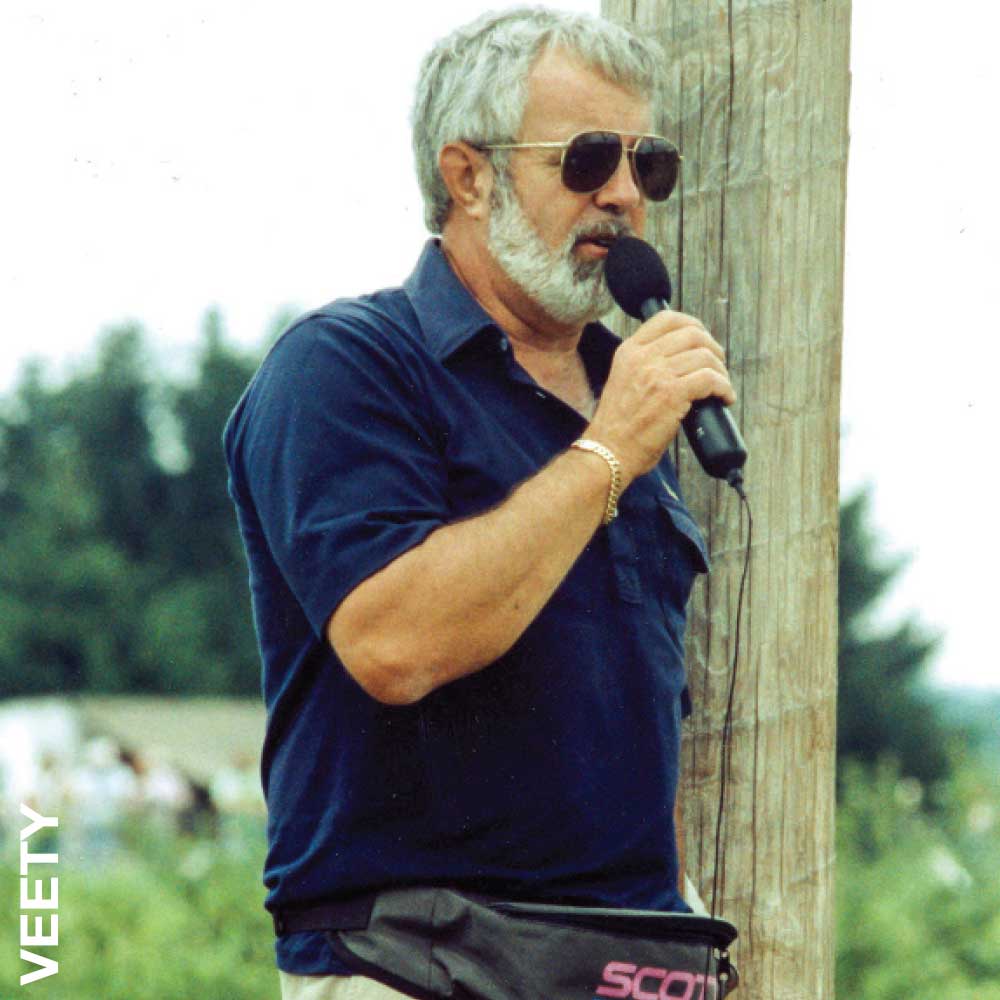
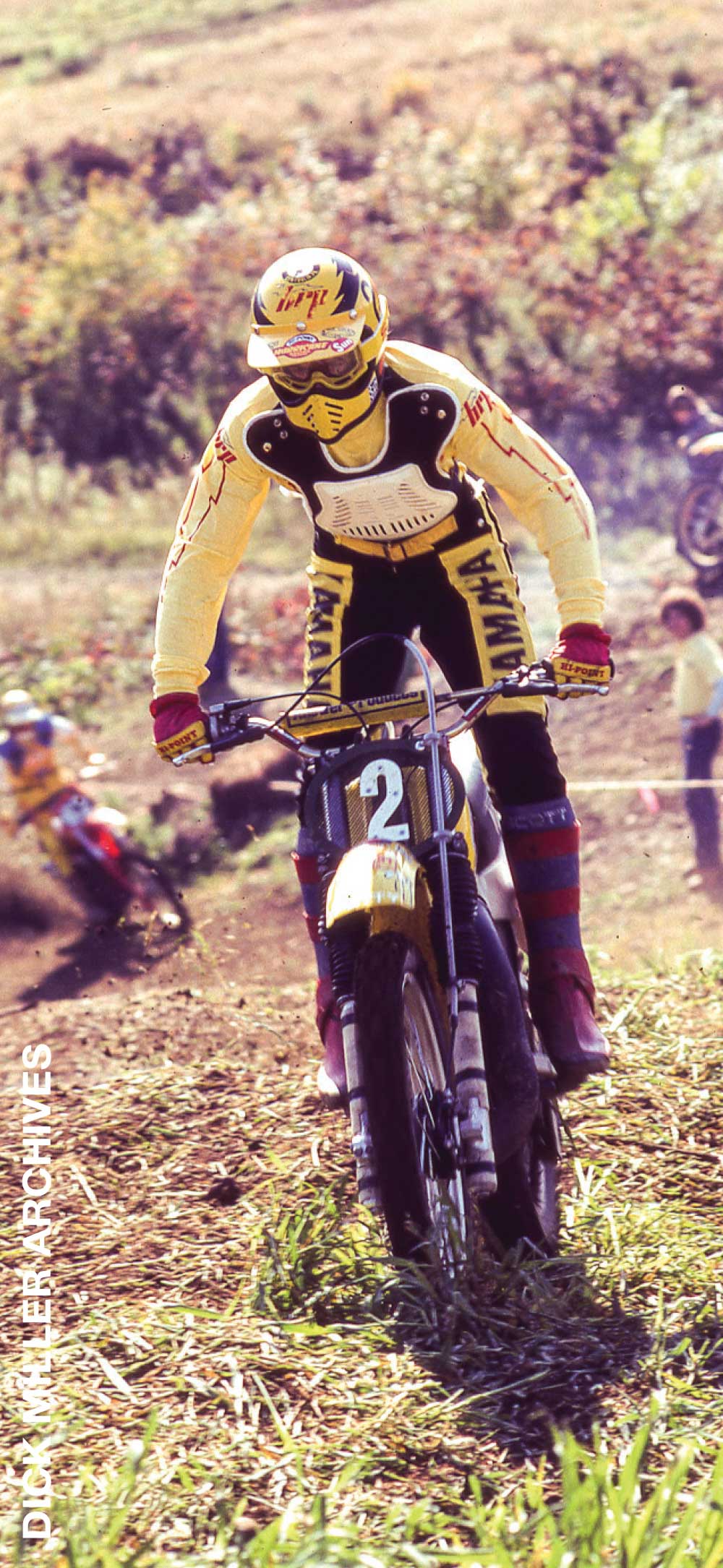
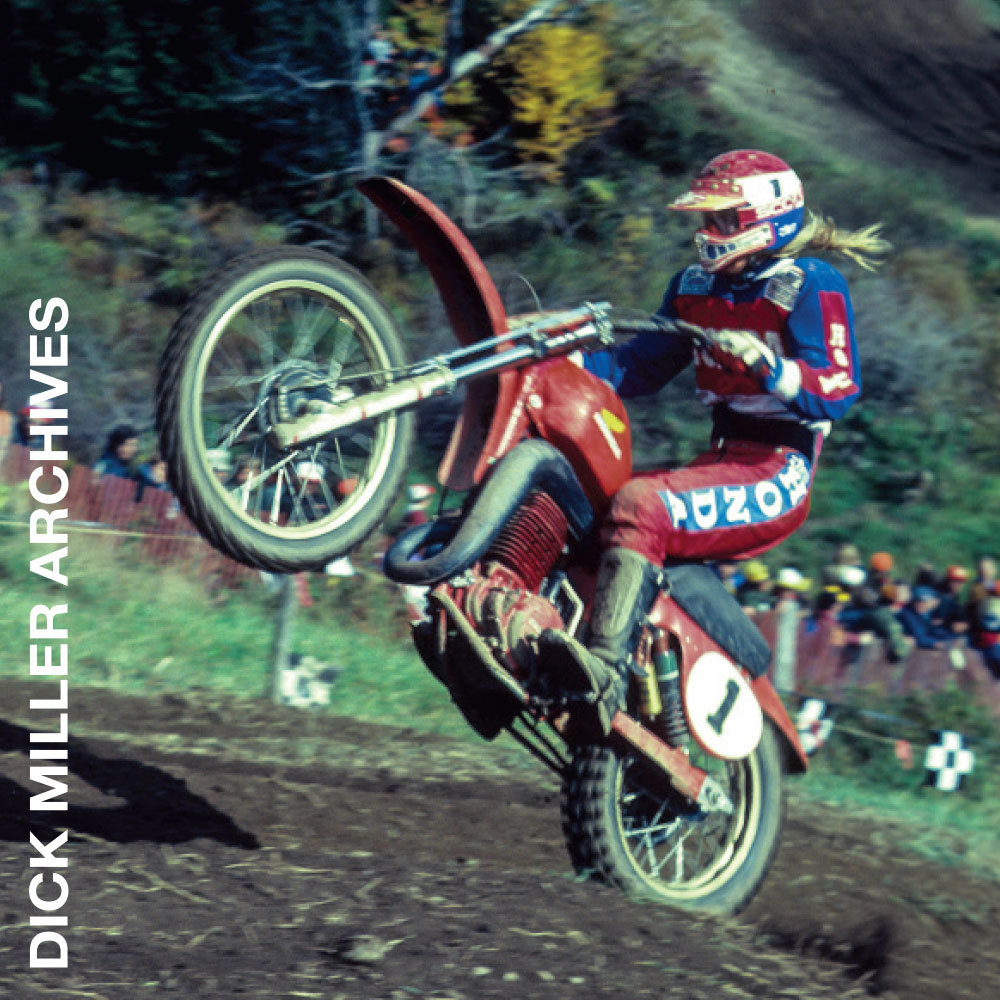
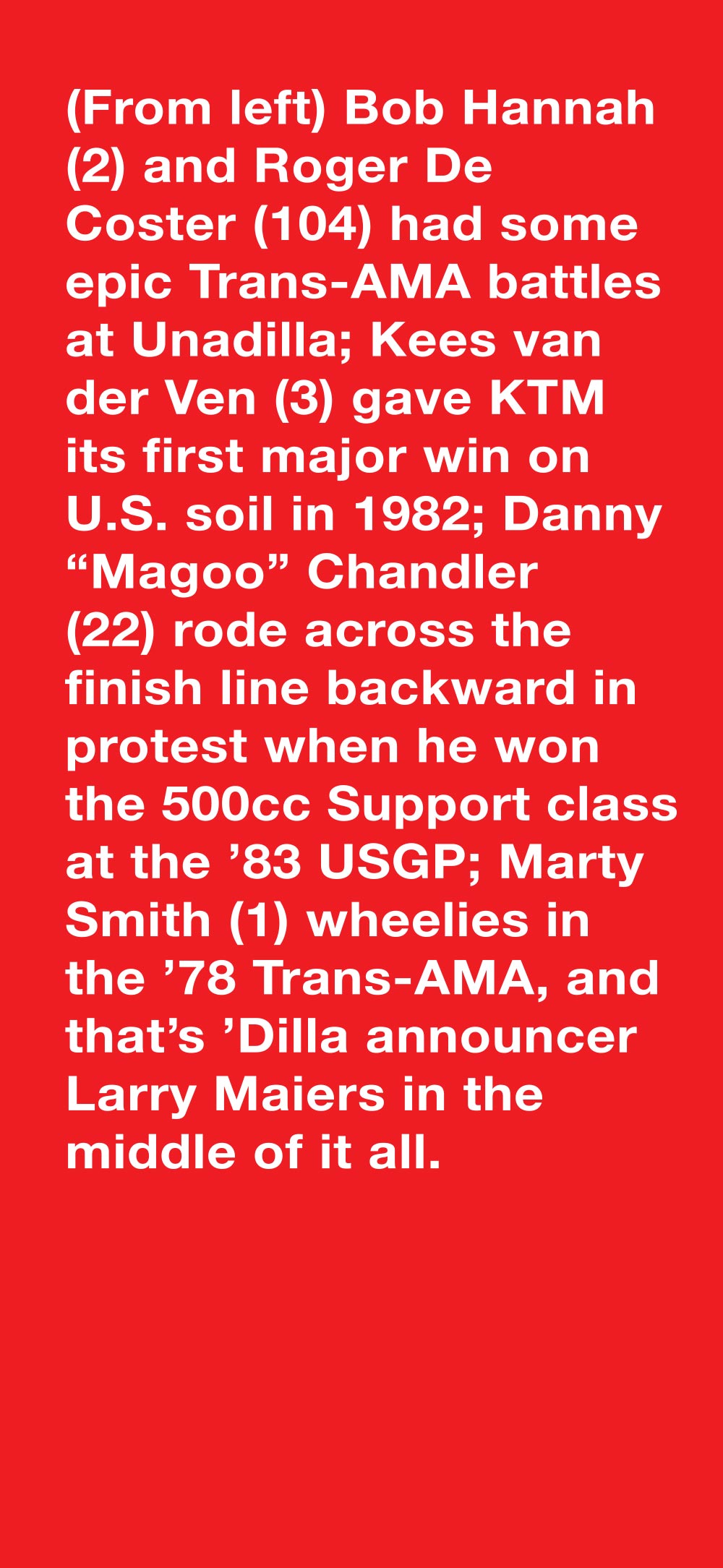







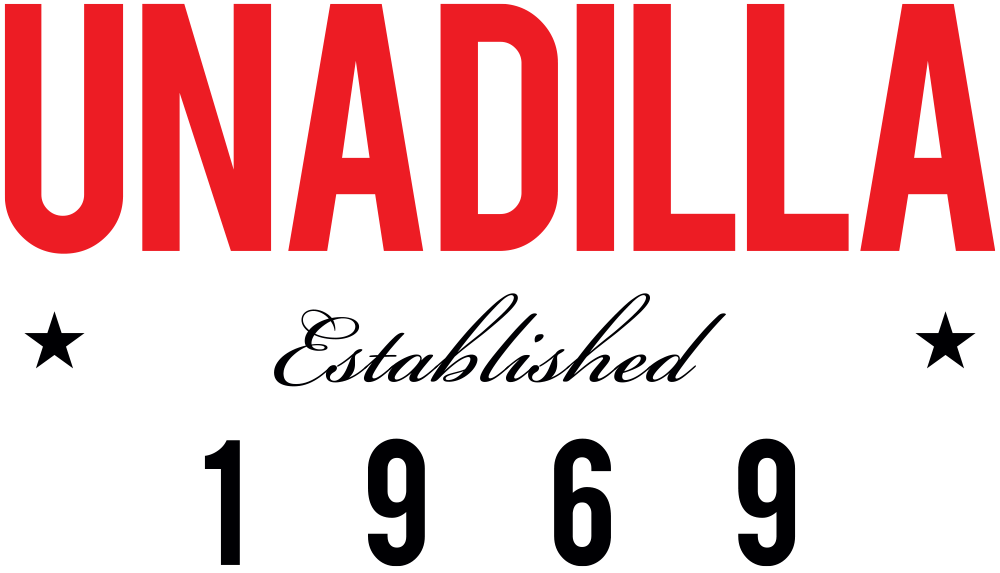
ack in 1968, my father went to Pepperell, which hosted a big Inter-Am race, and he fell in love with what they were doing,” Jill Robinson says of how her parents, Ward and Peg, got into motocross. “So he basically told my mom, ‘That’s what I want to do.’ And I think my mom’s response was, ‘Over my dead body.’ But he was committed to it, so he kept his eye out for some land where he could maybe build a track. He finally found an older gentleman who was looking at getting out of farming. Dad was able to walk in and buy it, and that was the beginning of it all—he picked up the land in ’68 and started racing on it in 1969.”
“I always recalled it just being Ward and his buddies wanting to ride on the property,” longtime AMA race official Duke Finch says of the track’s origins. A native New Yorker, Finch grew up 45 minutes from Unadilla. (All told, he has only missed two major races at the track affectionately known as ’Dilla.) “I remember hearing that they wanted to get an AMA sanction and hold races, but the AMA said, ‘No, that’s not racing, that’s just guys riding around in a field.’”
Robinson went ahead with his first race, on a track laid out by local hotshoe Bob Thompson, and the basic footprint of the track remains much the same today. But the Robinsons don’t know much more about those very first races, as Jill and her brother Greg were just kids, and they admit that their parents didn’t document everything at the time. However, one person who was there was a young CZ rider from Belgium who would become a household name.
“I remember we stayed at the Deer Path Motel across the street from the track,” Roger De Coster says of his very first visit to Unadilla, for an invitational race. “It’s a little place where they held sign-up, and we somehow got a room there, so we were like VIPs. When we went out for practice, the grass was probably 2 to 3 feet tall, and the grass would lay down as the guys rode over it, and so the first practice session was like ice! Back then it was all natural and just very intricate.”
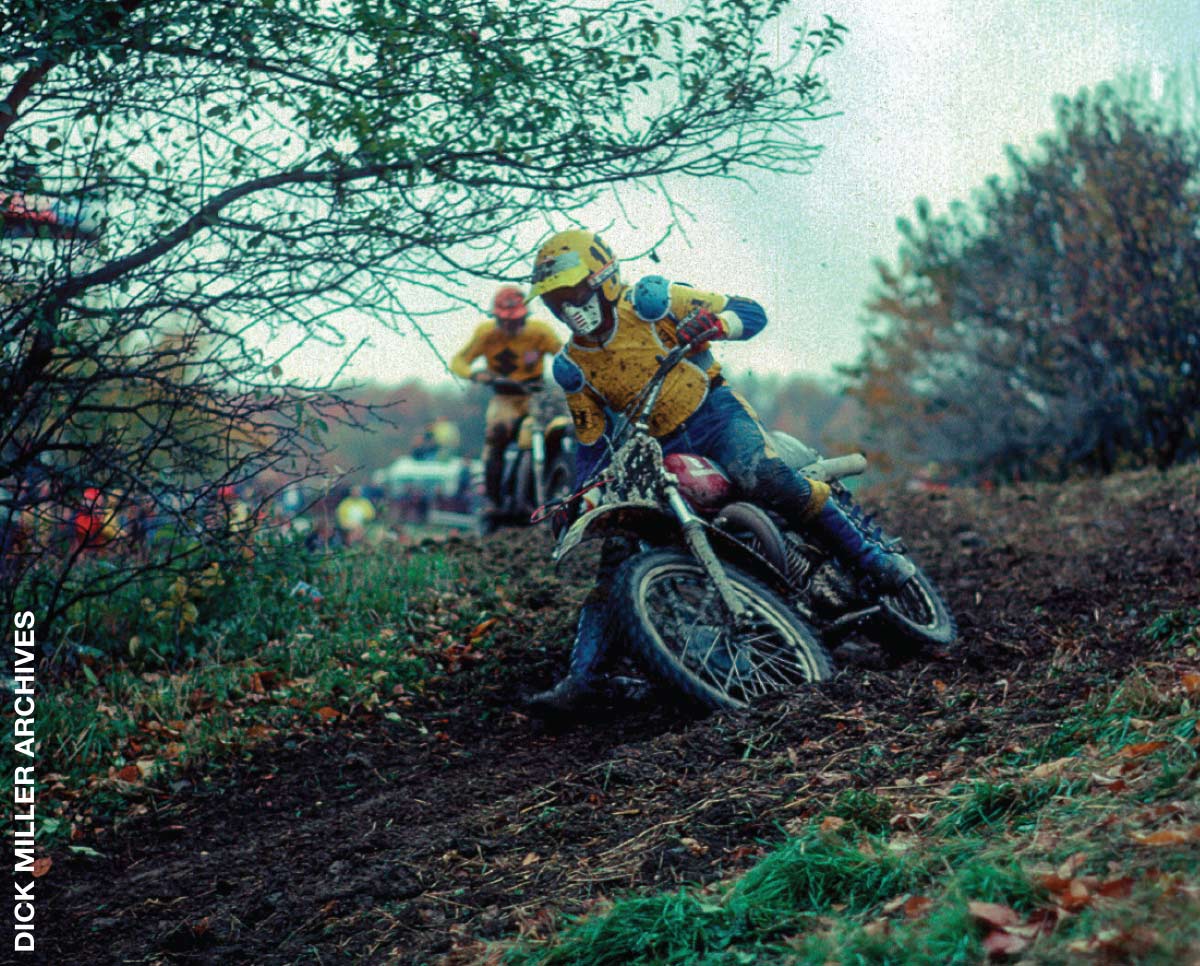
Unadilla would host the second Trans-AMA round, held the same day as the Inter-Am at Ohio’s Honda Hills. That split the top riders and visiting European stars: the Swedes of Team Husqvarna and the Belgians of CZ all went to Ohio, while the British stars of the BSA team all opted for Unadilla. To no one’s surprise, they went 1-2-3-4 in the final tally, with former world champion Jeff Smith claiming the win. Incidentally, this would mark BSA’s last major motocross win in America, as Suzuki dispatched Joel Robert, the world’s best rider at the time, to follow the rest of the inaugural Trans-AMA Series. He swept the last six rounds, and in doing so launched the beginning of the end of the reign of European dirt bikes.
s motocross became more popular in the early seventies, Unadilla began to gain a reputation as a true motocross track. Upon his first visit to Unadilla, for the ’73 Inter-Am (which was by now AMA-sanctioned), Motocross Action’s Pete Szilagyi called Unadilla “probably the best motocross track in the U.S.A.,” adding, “The riders and spectators love it, and if there is one Inter-Am race to make for sure, this is it.”
Three years later, MXA’s Paul “Bazzer” Boudreau visited for the Trans-AMA Series and called it “America’s premier motocross track” as he watched De Coster carve it up once again. “This course was the moment it was conceived,” he wrote. “The rolling hill country northwest of New York’s Catskills provides ideal terrain for the gnarly, difficult track so much to Roger’s liking.” There was only one race a year on the track back then, so they would leave the ruts and berms alone and simply replant the grass.
“Promoter Robinson owns a real nice bulldozer, but for the Trans-AMA he only uses it for pulling the big race trucks out of the big mudhole that invariably forms around the pit gate,” Boudreau wrote. “The rise and fall of the terrain he wisely leaves to Mother Nature. The result is the stuff of a motocrosser’s dream. Win, lose or DNF, the riders return to their pits like sultans from the bedchamber, surfeited with the abundance of hills, switchbacks, jumps, off-cambers and live water crossings Unadilla has to offer… Seeming to take in every obstacle the grassy valley has to offer, the track layout resembles the aftermath of a day’s work by a kitten with a ball of yarn.”
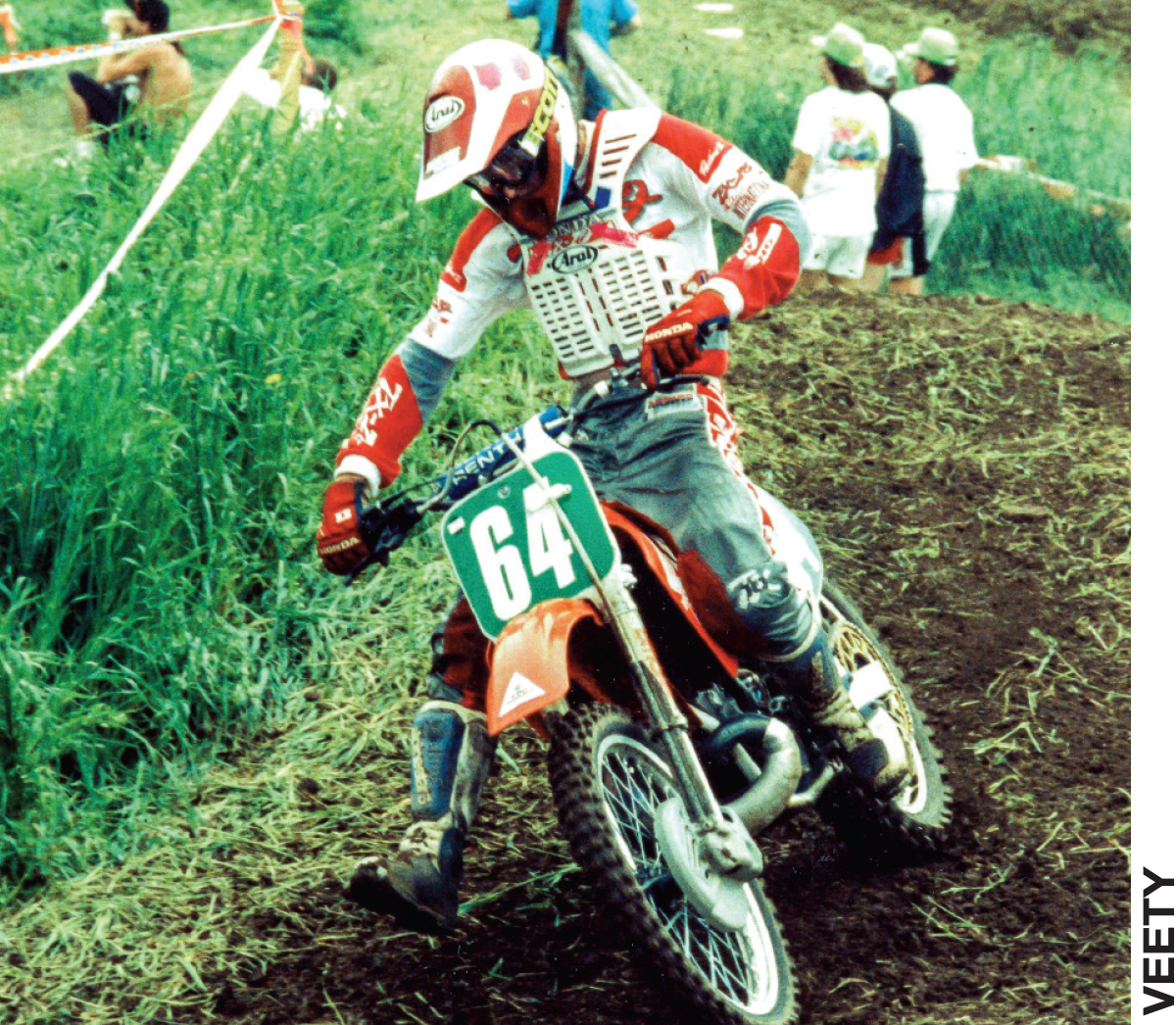
“We had a good battle there,” Roger recalls. “Bob was maybe at his peak then. He beat me the first moto and I beat him the second time. We had a really close race—it was awesome.”
It was bitterly ironic for De Coster that, while he never won the race he was supposed to win every year—the Carlsbad 500cc USGP (after all, he was a five-time 500cc World Champion) he was dominant at Unadilla.
“Unadilla was more like a European track, and I was very comfortable there,” De Coster says. “I just knew the place so well, and it really suited my style.”
“When Roger started coming over, just as he was becoming ‘The Man’ in motocross, and [to] have him fall in love with the facility and raving about it, not only did it really begin to set Unadilla’s reputation, it started putting it on the map in Europe as well,” Jill Robinson explains. “Having Roger there year after year was really important to Unadilla.”
y the end of the seventies, the Inter-Ams were done and the Trans-AMA tour was beginning to wane under the demand for supercross racing. Fortunately, Unadilla pivoted to hosting the 250cc U.S. Grand Prix. When the European contingent arrived—including Russian legends Gennady Moiseev and Vladimir Kavinov—the FIM’s Renee Brunell’s first impression of Unadilla was to call it “one of the best courses in the motocross world.”
Oddly enough, the infamous Screw-U was actually taken out of the course configuration after complaints by the AMA. It returned the following year after the riders complained in turn, as did MXA’s Dick Miller, who argued that Unadilla needed to be in its fullest form, because “to be great, our riders will have to learn how to race in the mud and sand, use a front brake, climb and descend steep hills, pick the best lines as a course changes, negotiate off-cambers, use throttle control, keep a bike together for a complete moto and learn to ride safely and wisely. Simple, isn’t it? First we will need a place to do all this; any ideas?” He answered his own question: “Good motocross is a race over natural terrain, under ideal conditions, and Unadilla has ideal conditions, with all of the conceivable obstacles that command great rider skill.”
It was also in ’78 that Miller captured the iconic photo of Hannah jumping out of Gravity Cavity, legs dangling in the air behind him, trying to control his works Yamaha. Unfortunately, the original 35mm chrome slide appears to have been lost forever, though it’s easy to find a low-res image of the moment online.
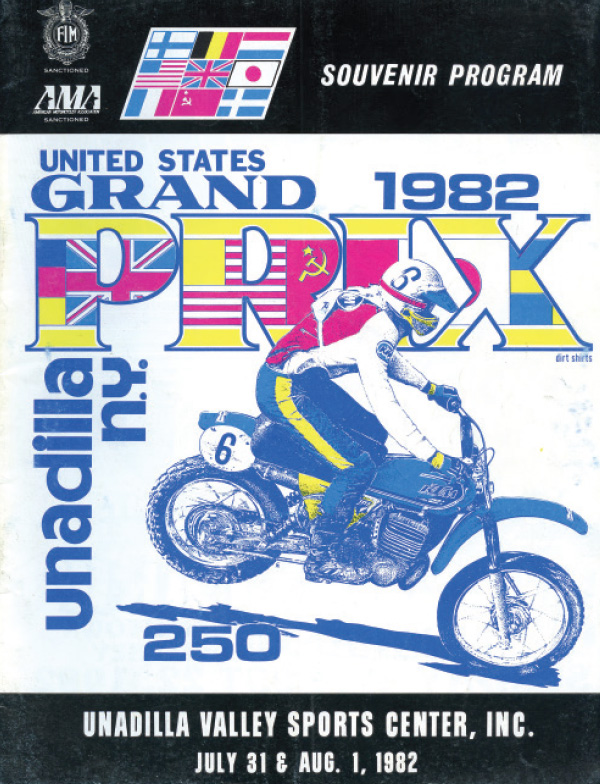
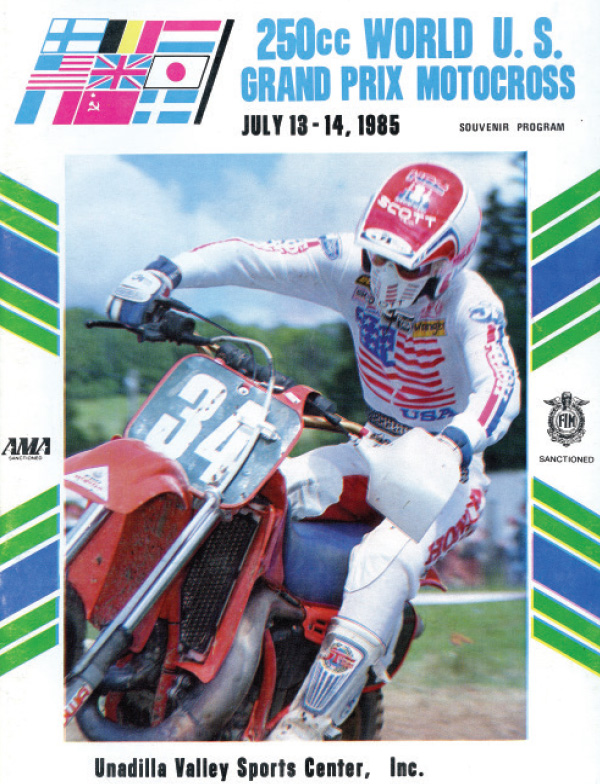
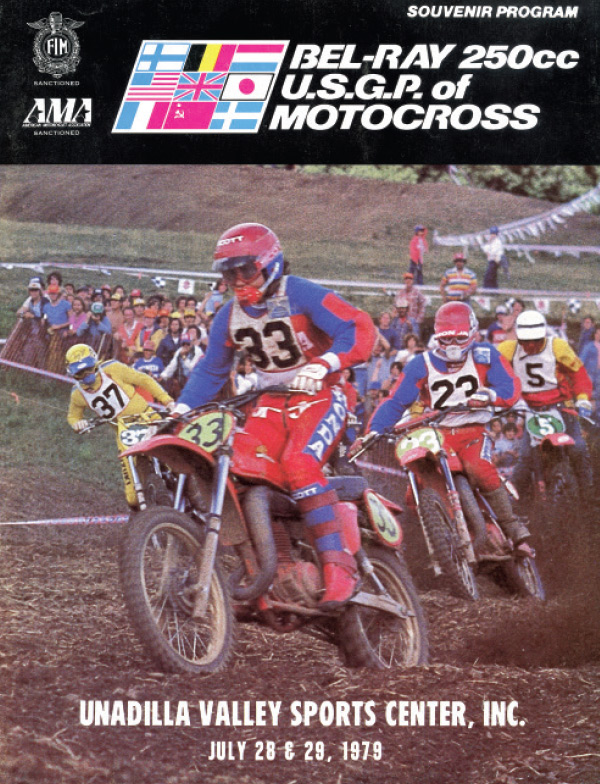
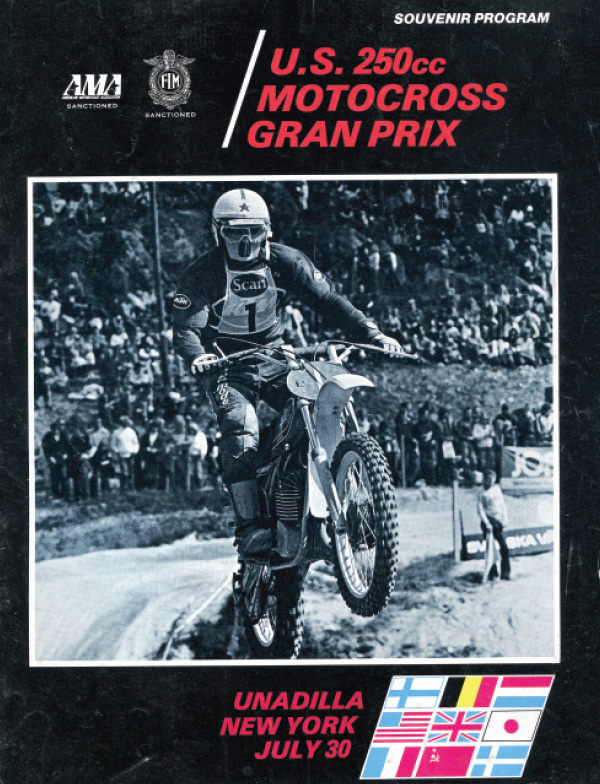
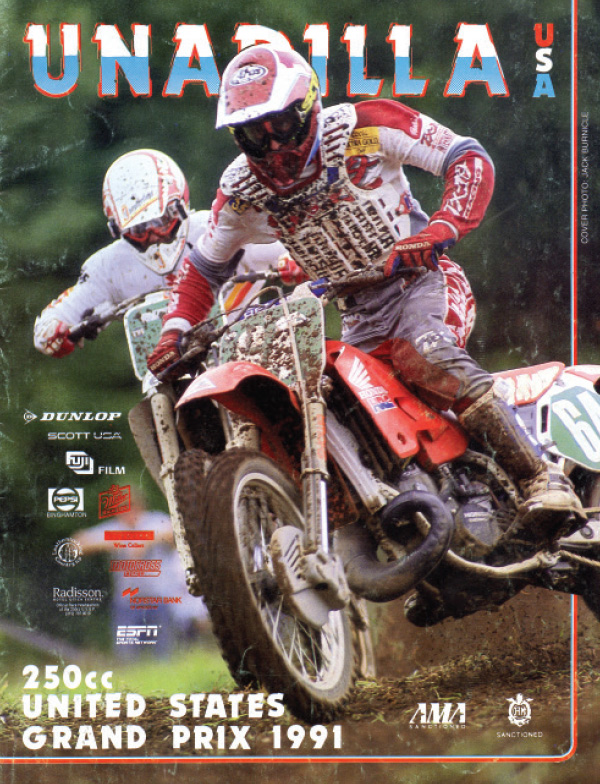
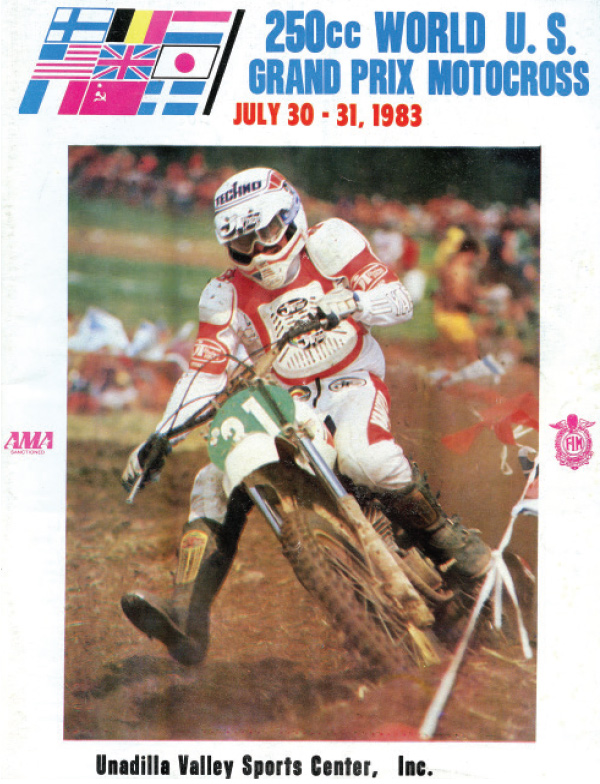
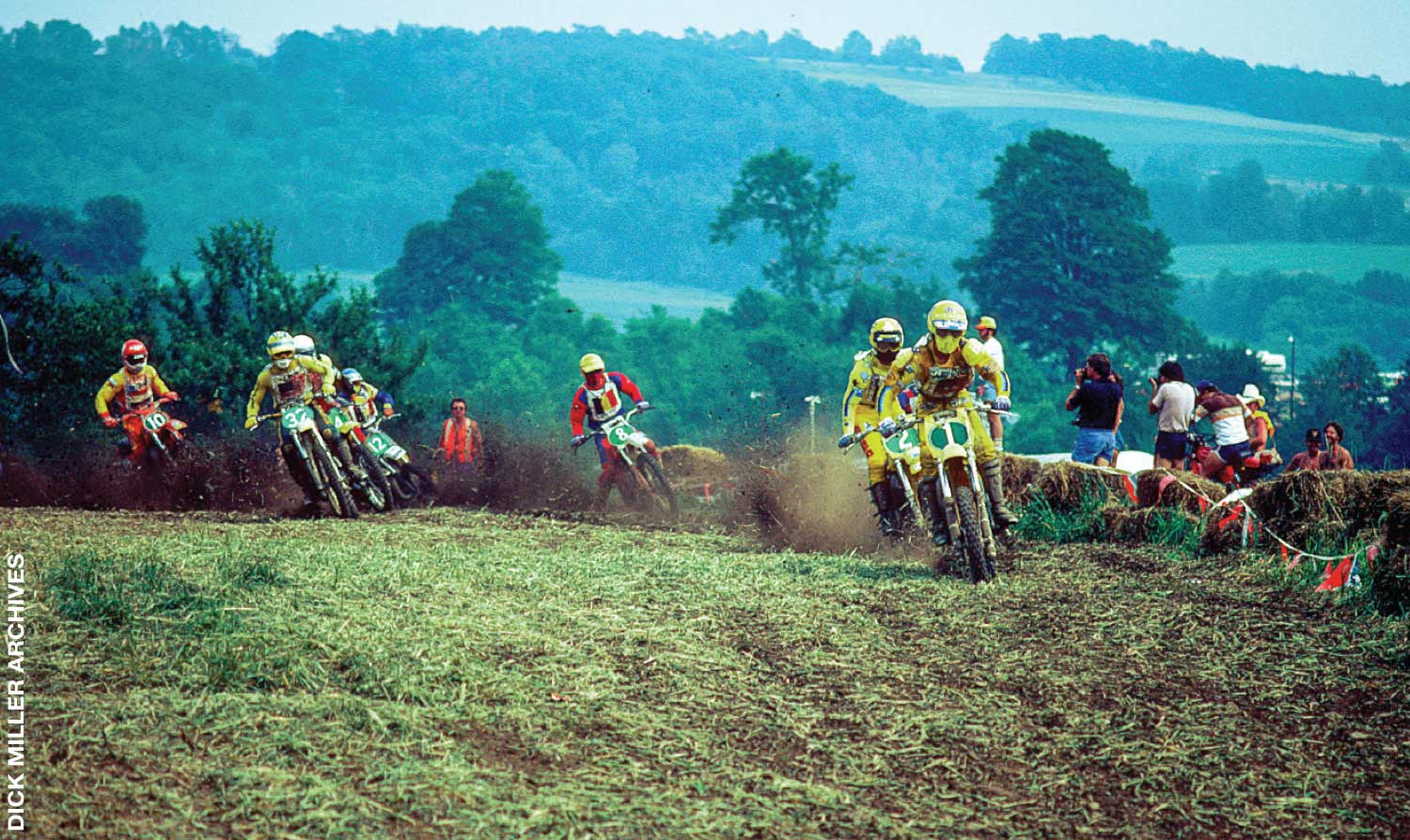
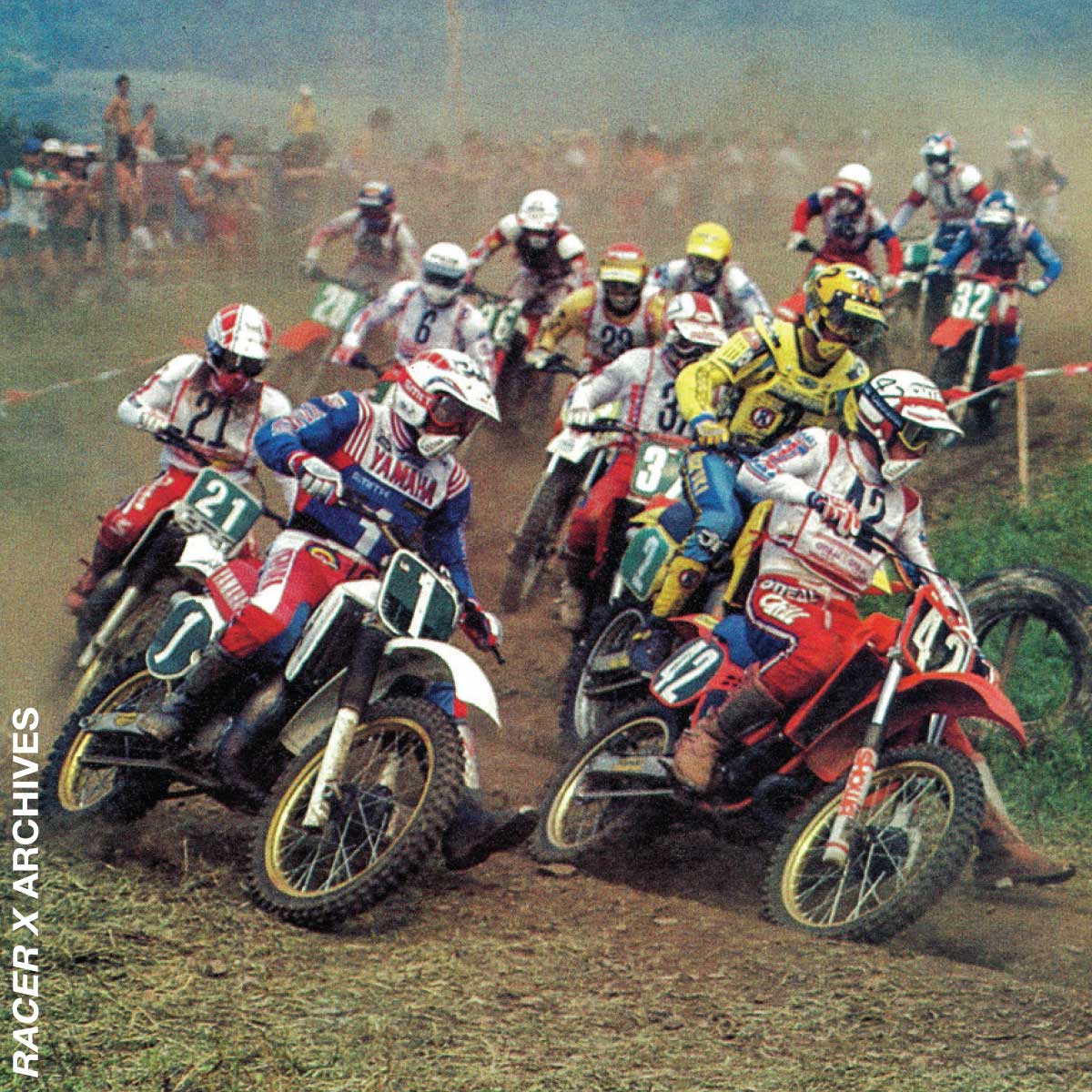

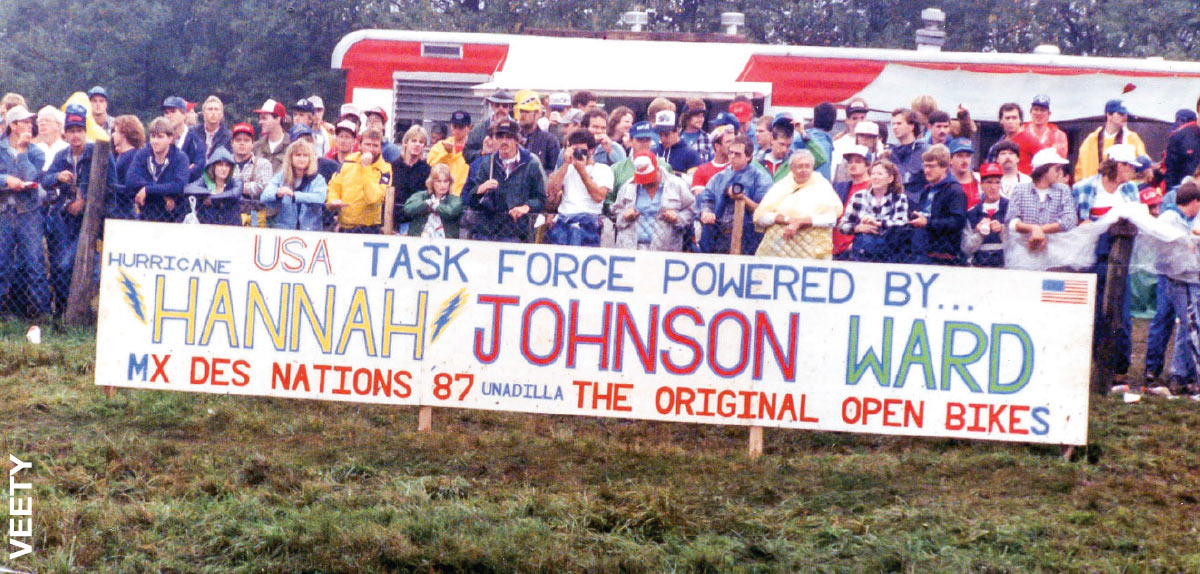
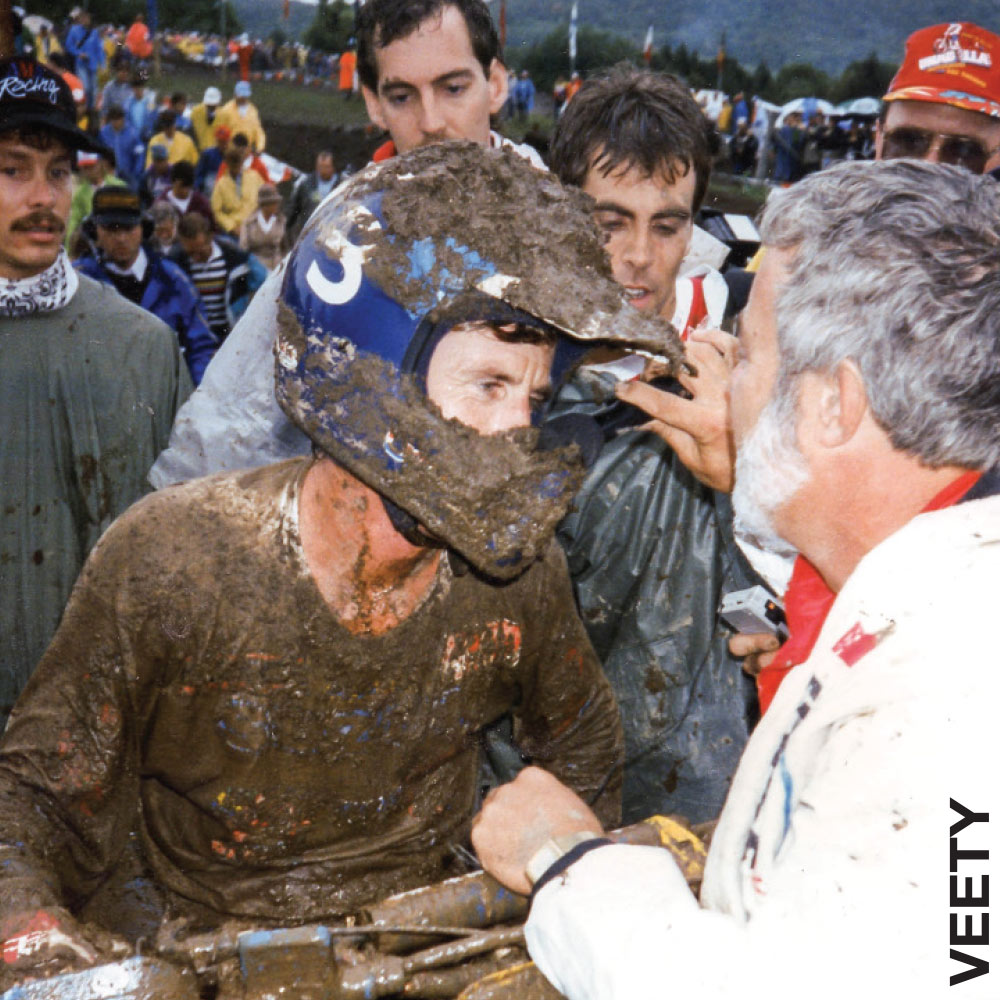
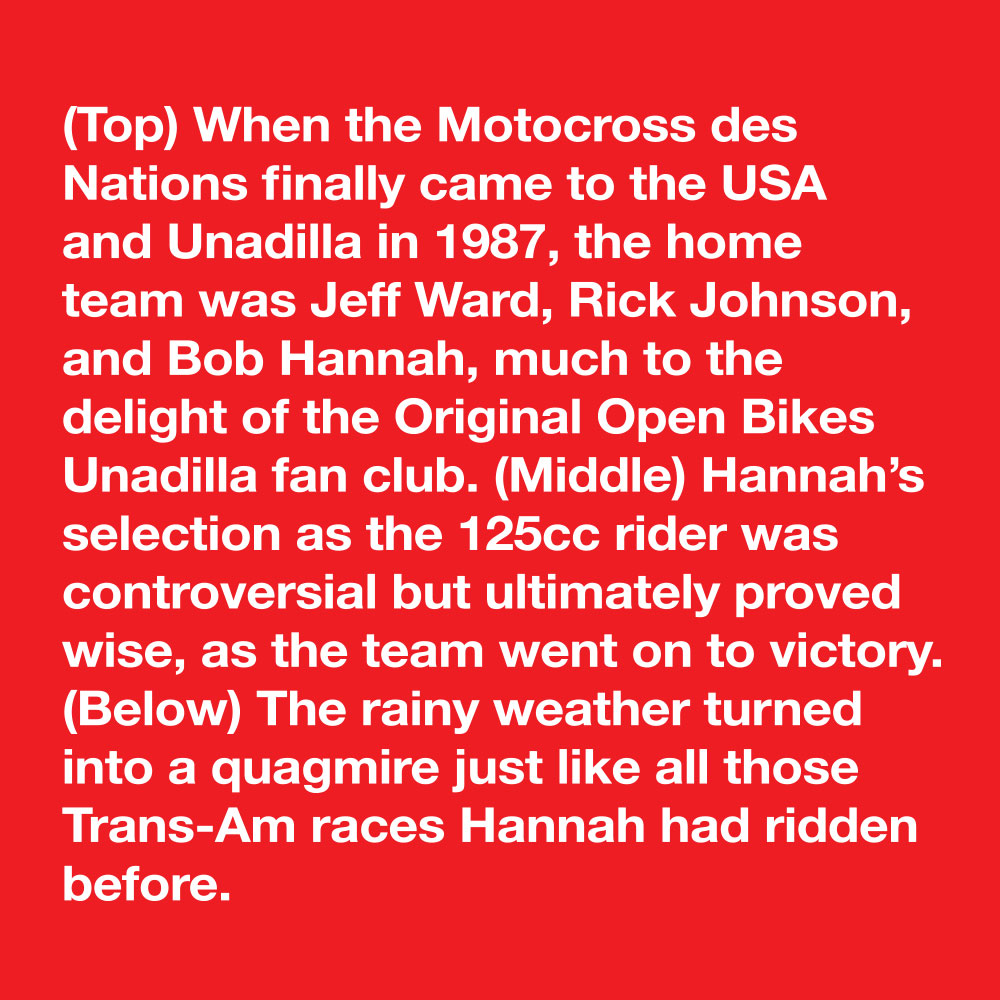
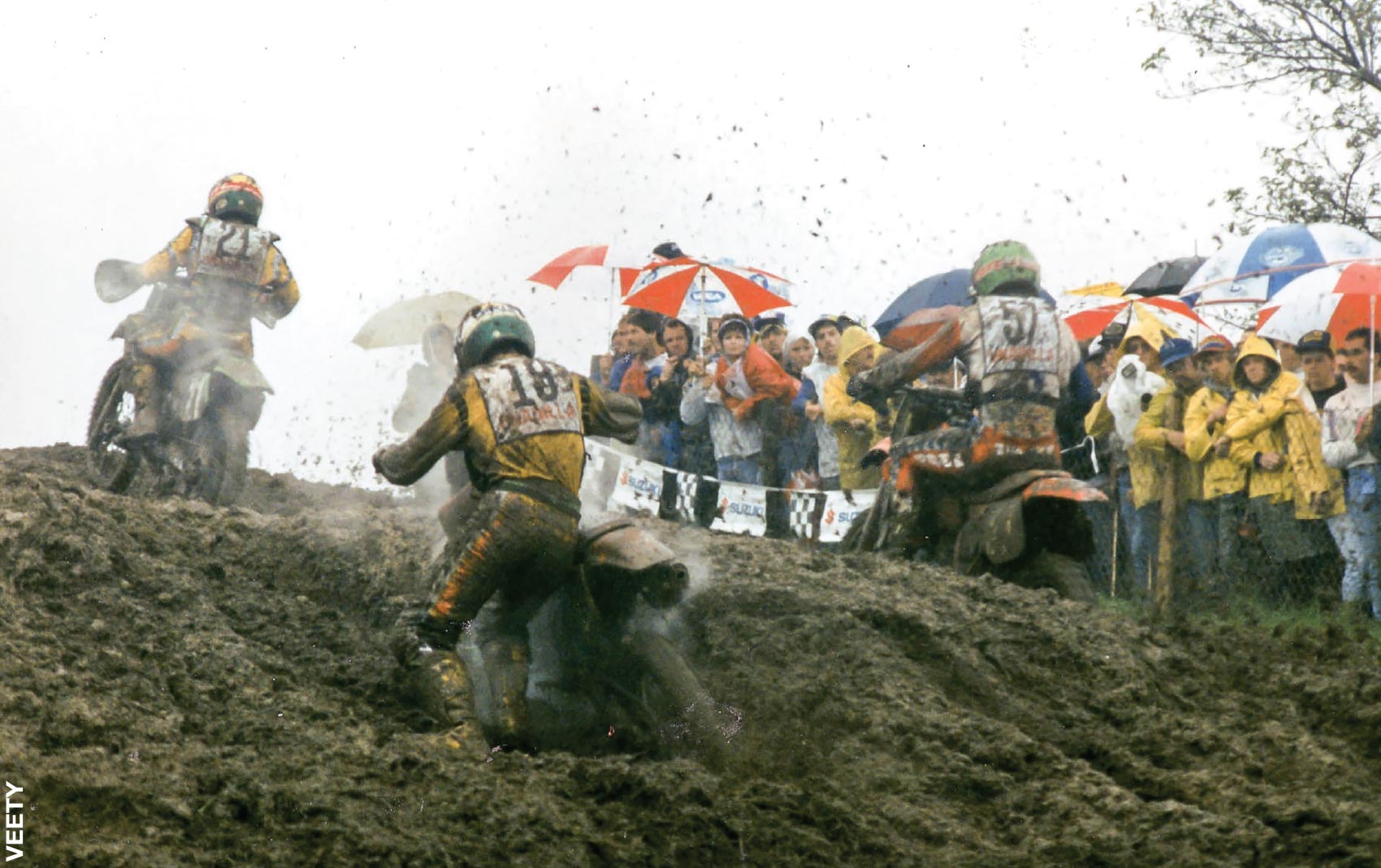












hroughout the eighties, Unadilla would host its annual 250cc USGP, and it soon became a U.S.-versus-everyone turf war that the Americans dominated. The enthusiastic ’Dilla fans would get in on the act, shouting at each other across the steep valleys, “The other sides sucks! The other side sucks!” The partisanship really picked up when Hakan Carlqvist of Sweden said, “The American riders are good, but they talk better than they ride.” Race announcer Larry Maiers seized on the opportunity to shout out some national pride, and it morphed from there into calling all of the European riders “commies!”—which really only technically referred to the visiting Russians, but that was beside the point.
“It wasn’t spiteful, it wasn’t mean-spirited, it was all just meant in kind of a fun way,” Jill Robinson says. “Larry could spin a tale and keep everyone amused, and he was the voice of Unadilla for a long time. He definitely got the fans into the race!”
As the passion of the fans grew, so did Unadilla’s reputation as a must-attend venue. The FIM realized as much and decided in 1987 to finally designate the track as host of what was then called the FIM Motocross des Nations. By this point, De Coster was done as a racer and Hannah was getting there. However, they were able to partner up as Team USA manager De Coster unexpectedly called on the veteran Hannah to race the 125 class alongside Rick Johnson (250) and Jeff Ward (500). It was going to be an epic matchup between the Americans and Europe’s best—for the first time on home soil—with Unadilla’s favorite son, Bob Hannah, carrying the flag.
Unfortunately, rains pounded the area the night before the race, turning what was promised to be the biggest motocross race ever into a survival test. Fortunately, the Hannah-led Americans won.
“Bob may not have been the best choice for the 125 for that race, but with the conditions we had, there really wasn’t anyone else who could have done the job,” Greg Robinson says of that fateful day in 1987. “His familiarity with the track in such muddy conditions—it was always like that for the Trans-AMA—is what ultimately sealed the victory. It was an enormous win for him, probably the crowning achievement of his incredible career.”
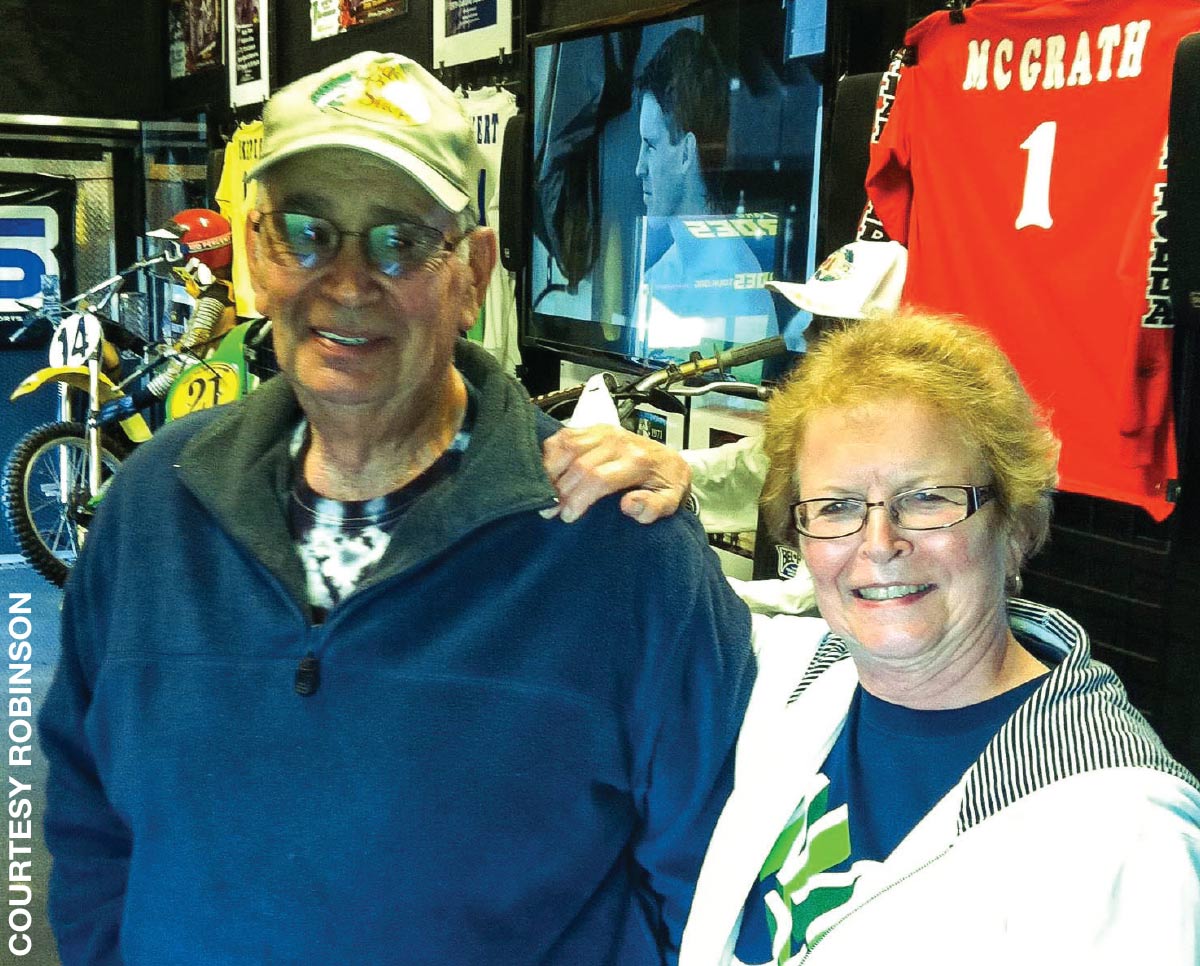
y the beginning of the nineties, the allure of a U.S. Grand Prix had diminished. Carlsbad was long gone from the 500cc tour, though Unadilla remained on the 250cc schedule through 1992. It was no longer a fair fight for the Europeans, as Team Honda’s multi-time champion Jeff Stanton had made Unadilla his own, much as De Coster had in the seventies. He won practically every moto over the last three years, and attention for the race was waning. The bigger problem, however, was the cost of international travel and shipping on the promoter’s side of the balance sheet, especially when it came to getting the bikes from Venezuela to Unadilla in a week’s time, as the Robinsons were challenged with in 1992.
“That last GP was a tough one for us,” Jill Robinson admits. “There was so much going on behind the scenes, trying to get all of the shipping containers here from South America, that we all practically learned to speak Spanish in the course of a week. So we told the AMA that if they were going to put us on the schedule again in ’93 and there was a round in someplace like Columbia or Venezuela before us, we’re out. We’re not doing it again. So the AMA told the FIM, but when the schedule came out, there was Venezuela, on the schedule right before Unadilla. The AMA asked my dad, ‘What do you want to do?’ He answered, ‘Well, do you have any outdoor nationals available?’”
That was the end of the U.S. Grand Prix at Unadilla. 
Look for “Part 2: The National Years” in the next issue of Racer X.

